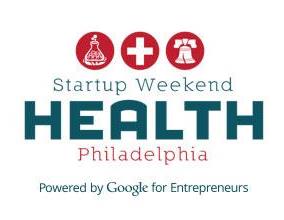A Startup Weekend Experience: Teamwork & Innovation
Much of our research at Melior has shown that healthcare and technology are the leading industry sectors of the future. To speak on this topic, we’ve invited our first guest blogger to The Minds @ Melior, Deborah Wyse. Deborah is a project management professional with public policy and technology expertise. An enthusiastic networker and eternal student, she enjoys connecting and learning in Philadelphia’s dynamic tech community.

Source: healthphl.startupweekend.org
What happens when 6 strangers work together for 54 hours to transform an idea for a health IT product into a business plan and demo? To find out, I participated in UP Global’s Philadelphia Startup Weekend Health 3.0, hosted by Venturef0rth, a co-working space for startups.
Several factors motivated me. I wanted to meet new people, learn more about the health technology sector and gain a better understanding of entrepreneurship. I finished the weekend with all that and more.
Organized by UP Global, Startup Weekends use entrepreneurship to inspire, educate, and empower. At the end of the weekend, a panel of judges evaluates the presentations. The winners receive a package of services and expertise designed to help launch their business. Philadelphia Health weekend’s grand prize was a fast track application for the health IT accelerator: DreamIt Health Philadelphia; and a year’s subscription to Netrepid’s virtual private server hosting services.
The Process
At Startup Weekend, all attendees are welcome to pitch their startup idea in 2 minutes or less. You are the message – no props allowed. However, no one is required to pitch an idea. At this year’s Philadelphia Health Startup, about half of the participants came with an idea for a health technology business. The rest, myself included, were interested in learning by doing.
We listened to about 30 pitches and then voted to select the 12 top ideas for the weekend’s work. Team recruitment came next. Having sold their idea to the group, the 12 successful entrepreneurs worked the room to put together a team. The Philadelphia Health weekend attracted many people with business and health care expertise. Developers and designers were in short supply and not every team was able to recruit this essential expertise.
The teams formed and went to work right away. Friday night, Saturday and Sunday, they created business models, designed web sites, coded prototypes, researched the competition and validated market demand. Established entrepreneurs in health care technology volunteered as coaches. They asked tough questions that often resulted in a project pivot.
At the end of the weekend, each team gave a 5 minute presentation to a panel of local entrepreneurial leaders – another opportunity for critical feedback.
The Outcome
I experienced the weekend as a member of the HouseKeeping team. Our business plan was to create technology to support fast, easy, low-cost patient tracking. After 54 hours together, the HouseKeeping team agreed that we had created a winner. Here’s what contributed to our success:
- Breadth and depth of subject matter expertise: healthcare provision, business, industrial and software design, and information technology.
- A leader who accelerated team formation by being receptive to and aware of different personalities and work styles.
- Diversity. Composed of three women and three men, HouseKeeping included undergraduate, graduate and post-graduate students and mid-career professionals.
- Committed and adaptive team members.
- Positive interactions with the coaches.
Our final presentation was dynamic, within time and included a demonstration video – with team members in the roles of patient and hospital staff – of the business concept. To me, the applause sounded especially enthusiastic. But when the results were announced, HouseKeeping did not come in first, second or third; two other projects shared an honorable mention.
After 54 hours together, the HouseKeeping team, 6 former strangers, agreed that HouseKeeping was a winner and that we had shared an amazing experience. HouseKeeping’s creator has taken the concept to San Francisco and is working hard to grow the business.
Whether or not you consider yourself an entrepreneur, I highly recommend the Startup Weekend experience. Bring an open mind, enthusiasm and a desire to learn. You too can come away with a win!
Resources and Additional Information
HouseKeeping – callhousekeeping.co
Start Up Weekend – www.startupweekend.org
Lean Start Up Weekend – www.leanstartupmachine.com
Philadelphia Health IT Circle – www.phitcircle.org









